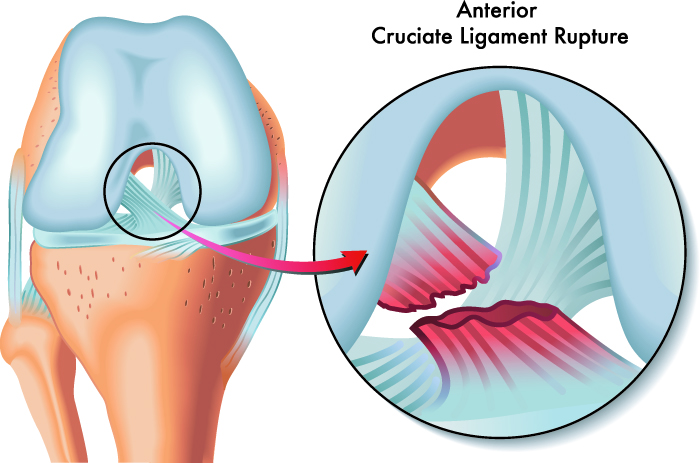Ligament Tear Treatment in Kondapur, Hyderabad
Ligaments are tough bands of tissues that connect bones all over your body. These are flexible and allow for movement between bones and because of ligaments, we can wiggle our toes and fingers or flex our feet. When strained beyond their inherent capacity, ligaments can get torn.
What are Ligament Tears?
A ligament tear can develop when a joint is subjected to a considerable level of force, such as during a high-impact incident or a bad fall.

What Are the Symptoms of Ligament Tears?
Signs and symptoms of ligament tears are;
- Pain
- Swelling
- Loosening of the joint
- Stiffness
- Difficulty while moving the joint
- Muscle spasms
- Bruising
- Snapping or tearing sensation at the time of injury
- Impaired movement
What Are the Causes of Ligament Tears?
When a joint is forced out of its normal position, a ligament tear can occur. This could occur as a result of a sudden twisting, a fall, or a direct strike to the body. Ligament injuries are more common during activities such as playing basketball, running, because quick movements, such as cutting or pivoting, are frequently necessary for these sports.
How are Ligament Tears Diagnosed?
Your doctor at Apollo Kondapur will evaluate your complete medical history and ask you about your symptoms to diagnose ligament tears. They will do a physical evaluation of the affected area. They will also inquire as to when your accident occurred and what you were doing at the time. They will also move the affected joint to see if there is any sensitivity or weakness.
Aside from that, imaging tests like X-rays and MRIs may be used to look for fractures and identify whether the ligament is partially or fully ripped.
How Can We Treat Ligament Tears?
The RICE approach is commonly used as the initial treatment option for ligament tears. This contains -
- Rest - Following an injury, the wounded region must be immobilized. The damage may worsen if the area is constantly moved.
- Ice - Use an ice pack to relieve discomfort for a brief time. It also aids in the reduction of swelling.
- Compression - A bandage should be put around the wounded region to decrease or limit swelling. This also helps to alleviate discomfort.
- Elevation - To minimize swelling, keep the injured area raised above heart level to restrict blood flow to the wounded area.
Apart from this, casts or braces may also be required for more severe ligament tears. Surgery may be required if nonsurgical treatment options don’t work.
Request an appointment at Apollo Spectra Hospitals, Kondapur
Call 1860-500-2244 to book an appointment
How Can We Prevent Ligament Tears?
Ligament tears can be avoided by using proper techniques when exercising or participating in sports, eating a well-balanced diet, doing strength and flexibility exercises, avoiding overexercising when fatigued, and focusing on developing each muscle group evenly.
If treated properly, ligament tears have an excellent long-term outlook. People with level 1 and level 2 sprains often recover in 3 to 8 weeks, allowing them to continue their everyday activities and regain full mobility. People with more severe ligament injuries may take months to fully heal, especially if surgery and therapy are required.
Ligament tears can be categorized based on their severity -
- Grade 1 - Mild ligament tears fall under this category.
- Grade 2 - A substantial ligament tear with a partial tear is categorized as a grade 2 ligament tear.
- Grade 3 - A grade 3 ligament tear is when there’s a complete tear.
Symptoms
Our Top Specialities
NOTICE BOARD
CONTACT US
CONTACT US
 Book Appointment
Book Appointment


.svg)
.svg)
.svg)
.svg)








